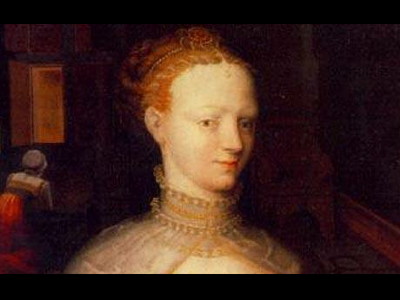It was not the man who held the highest power in ancient Spain but the `` ivory lady ''

A new analysis reveals that the remains of a very high-ranking individual found in the remains of a tomb dating from around 2900 to 2650 BC on the Iberian Peninsula belonged to a woman, a paper published in 2023. It was published in Scientific Reports on July 6th.
Amelogenin peptide analyzes reveal female leadership in Copper Age Iberia (c. 2900–2650 BC) | Scientific Reports
Highest-ranking person in Copper Age Spain was a woman, not a man, genetic analysis shows | Live Science
https://www.livescience.com/archaeology/highest-ranking-person-in-copper-age-spain-was-a-woman-not-a-man-genetic-analysis-shows
The subject of research in this paper is a human bone found in a Chalcolithic tomb in Seville, Andalusia, Spain. A large amount of valuable items such as crystal daggers, high-quality flint stones, ostrich egg shells, and amber were found in the nearby ruins as grave goods.
``Crystal dagger'' 5000 years ago can be found in Spain - GIGAZINE

The human bone was originally thought to belong to a man who was in a high position and was called 'The Ivory Man' because it was buried with a splendid ivory.
However, a research team led by Leonardo García San Juan of the Department of Prehistoric Archaeology, University of Seville, Spain, chemically analyzed the composition of the remains, and found that the person buried was a woman, not a man, and that the ivory It was announced that it was 'The Ivory Lady' instead of 'Man'.
An early examination of the bones reported a male by analysis of the pelvis, but the pelvis of the remains was incomplete. Therefore, when Garcia San Juan et al
The research team believes that this person was 'the person with the highest social status in all of Iberia.' This is because no man who held a position equal to or close to that of an ivory woman has been found in archaeological sites around the Iberian Peninsula.
A reconstruction of an ivory lady.

The remains of at least 15 women have also been found in a nearby rich tomb of the same period. The tomb is believed to have been built for women who claimed to be descendants of the Lady of Iberia, suggesting that women held leadership positions in Chalcolithic societies on the Iberian Peninsula. .
Another important point is that the graves of infants found in this area are devoid of burial goods. This indicates that social status was not inherited by blood at that time.
Garcia San Juan said, 'The Ivory Lady was a leader who existed before there were kings and queens, and that position was not inherited from anyone. It means that he has risen to the position of leader,' he said.
Related Posts:
in Science, Posted by log1l_ks







